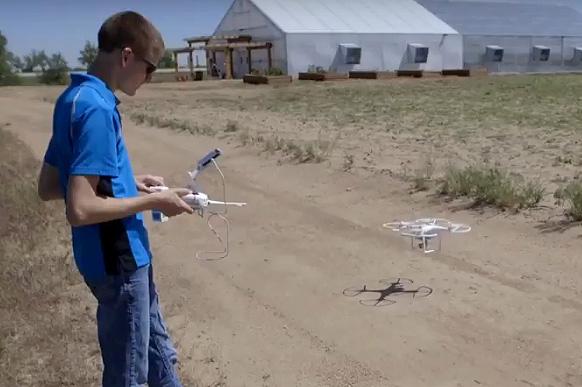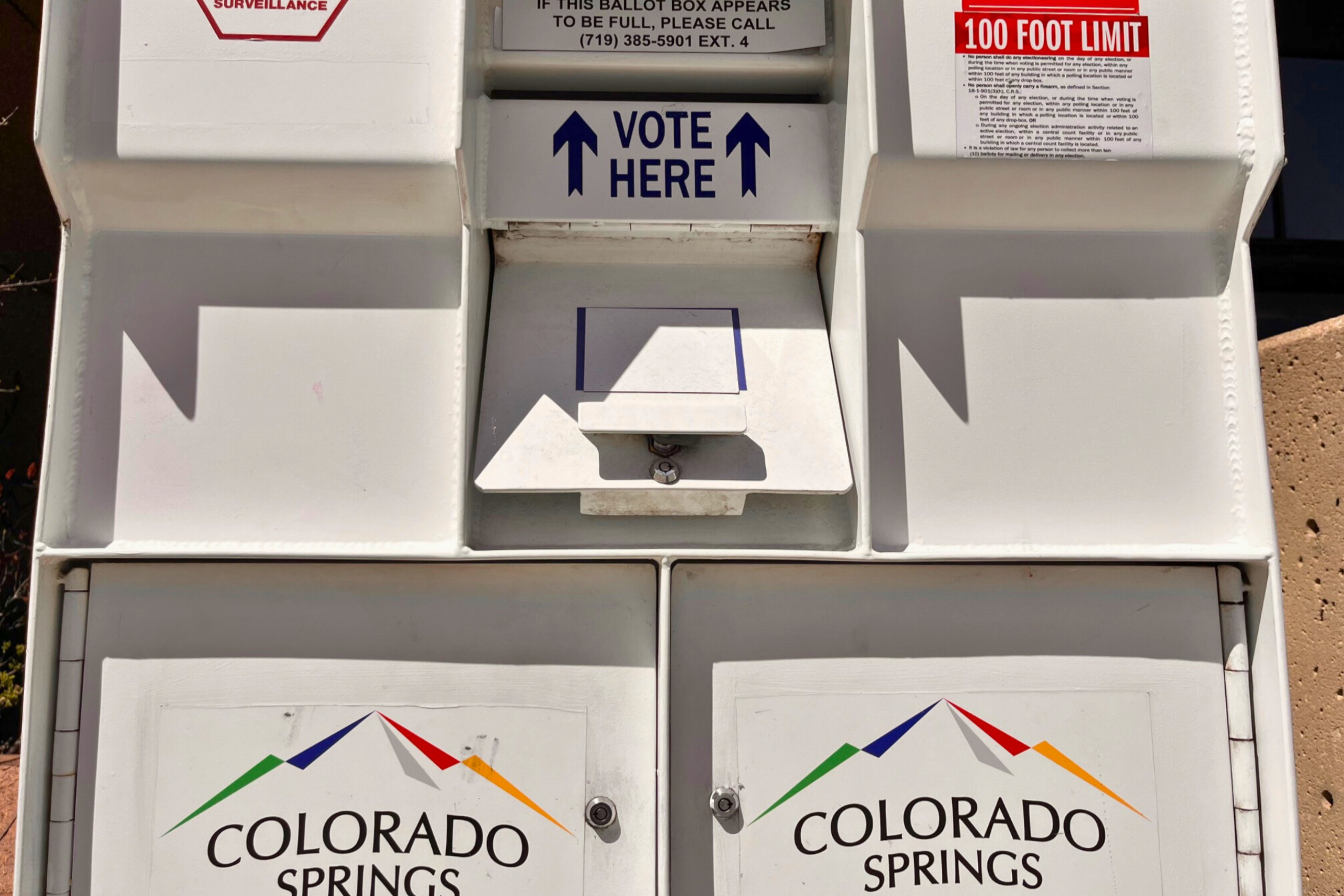
Out in a corn field in Kersey, Colorado, one can hear the passing of semi trucks, the rustling of crops in the breeze, and something else — the soft hum of a drone flying over the landscape.
The tiny aircraft is piloted remotely by Platte Valley High School senior Kyle Ley, who spends his summers at his school farm, and in other farmers’ fields, checking crops from an airborne point of view.
Ley is the only commercial certified pilot at his school. He uses drones as a main part of his supervised agricultural experience project under his school’s Future Farmers of America program.
Drones are just the latest technology used in agriculture to help farmers get the best yield out of their crops. They save farmers the time and effort of checking fields on foot, the photos from the aircraft offer a view unavailable from the ground, and those photos can be merged with mapping software to allow farmers to pinpoint different hazards affecting their fields.
If there’s a catch, it’s the price of the hardware and software. Farmers have to weigh it against all the other machines and technology already used in their fields. There are also older farmers who are not ready to change their ways to welcome new technology. Ley though believes these kinds of technological advancements give hope to younger generations entering agriculture.
“They're getting raised on all of this technology and learning the different techniques so they are going to be the ones who drive it, of having this autonomous precision ag technology,” he said. “The older generation is going out, and the new generation is going to come in and pick up on all the new stuff.”








